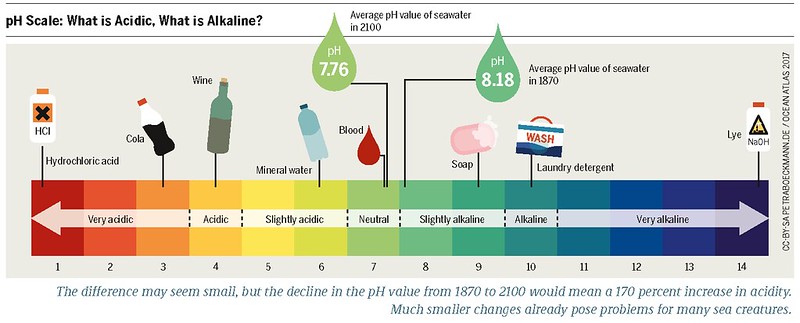The pH of a strong base in water is typically between 12 to 14. Strong bases are completely ionized in water, releasing hydroxide ions (OH-). To calculate the pH of a strong base, you need to find the concentration of OH- ions first, which is the same as the concentration of the strong base. Then, you can calculate the pOH or [H+] using the formula Kw = [H+][OH-].
Understanding Strong Bases
Strong bases are substances that completely dissociate in water, releasing a high concentration of hydroxide ions (OH-). This makes them highly alkaline, with a pH range of 12 to 14. Some common examples of strong bases include:
- Lithium hydroxide (LiOH)
- Sodium hydroxide (NaOH)
- Potassium hydroxide (KOH)
- Barium hydroxide (Ba(OH)2)
These strong bases are widely used in various industries, such as in cleaning products, drain openers, and as neutralizing agents.
Calculating the pH of a Strong Base
To calculate the pH of a strong base, you need to follow these steps:
- Determine the concentration of the strong base in the solution.
- Calculate the concentration of the hydroxide ions (OH-), which is the same as the concentration of the strong base.
- Use the Kw equation (Kw = [H+][OH-]) to find the concentration of hydrogen ions (H+).
- Calculate the pH using the formula pH = -log[H+].
Let’s look at an example:
Suppose you have a 0.2 mol/L solution of barium hydroxide (Ba(OH)2). To calculate the pH:
- The concentration of Ba(OH)2 is 0.2 mol/L.
- Since each mole of Ba(OH)2 releases 2 moles of OH-, the concentration of OH- is 0.4 mol/L.
- Using the Kw equation, we can calculate the concentration of H+:
Kw = [H+][OH-]
1.0 x 10^-14 = H+
[H+] = 1.0 x 10^-12 mol/L - The pH can be calculated as:
pH = -log[H+]
pH = -log(1.0 x 10^-12)
pH = 12
Therefore, the pH of a 0.2 mol/L solution of barium hydroxide (Ba(OH)2) is 12.
Factors Affecting the pH of Strong Bases
The pH of a strong base can be affected by several factors, including:
- Concentration: The higher the concentration of the strong base, the higher the pH.
- Contaminants: The presence of contaminants or substances that can react with the hydroxide ions, such as acids or weak bases, can affect the pH.
- Temperature: The pH of a strong base can slightly change with temperature, as the Kw value is temperature-dependent.
To maintain the desired pH of a strong base solution, it is essential to monitor and control these factors.
Applications of Strong Bases
Strong bases have a wide range of applications, including:
- Cleaning and Degreasing: Strong bases, such as sodium hydroxide (NaOH), are used in various cleaning products, including dish soap, laundry detergents, and industrial degreasers.
- pH Adjustment: Strong bases are used to neutralize acidic solutions and adjust the pH of water or other liquids.
- Chemical Synthesis: Strong bases are used as reagents in various chemical reactions, such as the production of biodiesel, pharmaceuticals, and other chemicals.
- Water Treatment: Strong bases, like lime (calcium hydroxide), are used in water treatment processes to adjust the pH and remove impurities.
Conclusion
The pH of a strong base in water is typically between 12 to 14, as strong bases completely dissociate in water, releasing a high concentration of hydroxide ions (OH-). To calculate the pH of a strong base, you need to determine the concentration of the base, calculate the concentration of OH- ions, and then use the Kw equation to find the concentration of H+ ions. The pH can then be calculated using the formula pH = -log[H+]. Understanding the pH of strong bases is crucial in various applications, from cleaning and degreasing to chemical synthesis and water treatment.
References:
– Study.com. (n.d.). How to Calculate the pH of a Strong Base Solution | Chemistry | Study.com. Retrieved April 27, 2024, from https://study.com/academy/lesson/how-to-calculate-the-ph-of-a-strong-base-solution.html
– Chem.LibreTexts.org. (2020, June 19). 7.14: Calculating pH of Strong Acid and Base Solutions. Retrieved April 27, 2024, from https://chem.libretexts.org/Courses/Brevard_College/CHE_104:_Principles_of_Chemistry_II/07:_Acid_and_Base_Equilibria/7.14:_Calculating_pH_of_Strong_Acid_and_Base_Solutions
– Nathan Oldridge. (2010, August 3). Calculate the pH of a Strong Base – YouTube. Retrieved April 27, 2024, from https://www.youtube.com/watch?v=iNibHKrZktg
– ThoughtCo. (2022, August 29). Acids and Bases – Calculating pH of a Strong Base – ThoughtCo. Retrieved April 27, 2024, from https://www.thoughtco.com/calculating-ph-of-a-strong-base-problem-609588
– Study Mind. (n.d.). Acids and Bases – pH of Strong Bases (A-Level Chemistry) – Study Mind. Retrieved April 27, 2024, from https://studymind.co.uk/notes/ph-of-strong-bases/
– Ausetute.com.au. (n.d.). pH of Strong Bases (Alkalis) Calculations Chemistry Tutorial. Retrieved April 27, 2024, from https://www.ausetute.com.au/phstrongb.html

